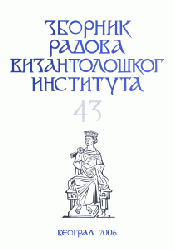O sticanju poslovne sposobnosti u srednjovekovnom srpskom pravu
On Acquirement of Legal Capacity in Serbian Medieval Law
Author(s): Srđan Šarkić Subject(s): Law, Constitution, Jurisprudence
Published by: Vizantološki institut SANU
Keywords: serbian medieval law; legal capacity;
Summary/Abstract: According to the Serbian legal sources it is not clear at what age full legal capacity was assumed. St. Stephen's Charter (1313-1318) says that a widow, who has a little boy, should hold the whole village untill her son become grown-up. It is clear that the persons under age could not enter formal transactions, but what was the age when natural persons assumed full legal capacity? So-called "Justinian' Law" in article 1 says that the full legal age was assumed at the age of 25. The Syntagma of Matheas Blastares exposes very complicate Byzantine system of three existing ages in the life of natural persons: 1) young persons (mladi) under puberty (14 male, 12 female) had no legal capacity and they were under tutorship (pristavnik, tutela,); 2) individuals who have reached puberty were, nevertheless, too young to administer their affairs and they were under cura (pecalovnik, коиратсор, guardianship over minors) until the age of 25, either male or female; 3) a person reached perfecta aetas at the age of 25, at which he had full capacity to act on his own behalf. But, Byzantine law required 4 years more for establishment (ustamenienije;) of all legal rights of ex-minor, so the concent of a curator was no more needed at the age of 30. According to the remaining legal sources it is impossible to say whether those Byzantine rules were applied in mediaeval Serbia or whether full legal capacity was assumed at the age of puberty (14 male, 12 female).
Journal: Зборник радова Византолошког института
- Issue Year: 2006
- Issue No: 43
- Page Range: 71-77
- Page Count: 6
- Language: Serbian

